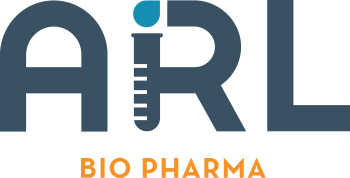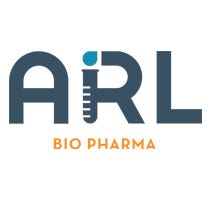The Impact of Sample Amounts on Potency Testing
This guest post is adapted from an article by our partner ARL Bio Pharma
Nora Talley, ARL Bio Pharma Analytical Associate Supervisor
Jessica Munson, M.S., ARL Bio Pharma Analytical Supervisor
Formulations require different sample amounts to allow for an accurate result representative of the compounded preparation. The table below is taken from ARL's Sample Submission Guidelines.
Potency (Per Requested Active Pharmaceutical Ingredient (API)
| Raw Powders | 50 mg |
| Triturates/Granulations/Blend Powders | 1 g |
| Solid Dose Forms (Tablets/Capsules/Pellets/Troches/Suppositories) | 5 units |
| Suspensions | 10 mL |
| Solutions | 2 mL |
| Semi-Solid Dose Forms (Creams/Lotions/Gels) | 3 g |
Powders
Raw powders require 50 mg to meet USP balance requirements and to allow for loss due to powder sticking to the container. Triturates, granulations, and blend powders differ from raw powders as they are a dilution of the active pharmaceutical ingredient (API). One (1) gram is requested for these sample types to allow for adequate API sampling and to reduce the effects of content uniformity.
Solid Dose Forms
Solid dosage forms such as capsules, suppositories, troches, pellets, tablets, and lozenges can be tested as single units for content uniformity assessment or by combining multiple units for a potency test. Combining multiple units collected throughout the batch is the best way to obtain an accurate potency result, which is representative of the overall batch, for solid dosage forms.
Suspensions
A minimum of 10 mL is requested for suspensions so proper mixing can occur. When the suspension is not mixed sufficiently to suspend the API, a test sample that truly represents the potency of the compounded preparation may not be obtained. This can cause both high- and low-test results.
Note: the container used for the sample (if not sent in the final package) should not be overly large, ideally not more than two times (2x) the size of the sample, as this can also cause sampling problems.
Solutions
Solutions are by definition uniform and are simple to sample. 2 mL of solutions are requested so 1 mL can be collected accurately for the potency test. Exceptions can be made for highly priced drugs.
Semi-Solid Dose Forms
In semi-solid dosage forms such as creams, lotion, gels and ointments, it is essential that the ingredients of the semi solid compound are evenly distributed throughout the sample. To evenly distribute the API, three (3) grams need to be provided so that when necessary the sample can be mixed evenly with in its container with a spatula.
The amounts ARL requests are not minimum amounts required for a potency test. Instead, these are amounts that ARL recommends to provide a potency test result that truly represents the sample.
Learn more about best practices for laboratory testing on ARL Bio Pharma's website.
See the latest News from ARLLetco customers can earn additional savings when they test with ARL Bio Pharma. Enroll today to start earning discounts and rebates today!


Latest Articles
-
Posted: April 21, 2020Categories: Industry NewsRead more »
Covid-19 has led to a constantly changing regulatory environment to support patient care. But pharmacists need to take care to monitor national as well as state laws and guidelines.
-
Posted: April 17, 2020Categories: Compounding EducationRead more »
Download our one-page flyer with tips and resources to help support the service your pharmacy and staff are providing to your communities.
-
Posted: July 08, 2020Categories: Industry NewsRead more »
The Alliance for Pharmacy Compounding held their Advocacy Town Hall, which you can watch in its entirety...
-
Posted: June 25, 2020Categories: Industry NewsRead more »
A recent clinical trial from the UK showed decreased mortality for patients seriously ill with COVID-19 requiring oxygen or ventilators when treatment included the corticosteroid dexamethasone...
-
Posted: June 05, 2020Categories: Industry NewsRead more »
This week, two major medical journals retracted separate studies on Covid-19 treatments due to an inability to validate the data and methodology used in the studies.
-
Posted: May 29, 2020Categories: Compounding EducationRead more »
The Institute for Safe Medication Practices (ISMP) recently shared a medication error involving remdesivir vial labels that provides an important example for compounders...
-
Posted: May 14, 2020Categories: Compounding EducationRead more »
Change control SOPs are critical in sterile compounding - and pharmacy technicians are not the only ones who need to understand machines and tools in the lab and workflows.
-
Posted: May 11, 2020Categories: Compounding EducationRead more »
Formulations require different sample amounts to allow for an accurate result representative of the compounded preparation.
-
Posted: April 21, 2020Categories: Industry NewsRead more »
Covid-19 has led to a constantly changing regulatory environment to support patient care. But pharmacists need to take care to monitor national as well as state laws and guidelines.
-
Posted: April 17, 2020Categories: Compounding EducationRead more »
Download our one-page flyer with tips and resources to help support the service your pharmacy and staff are providing to your communities.
-
Posted: July 08, 2020Categories: Industry NewsRead more »
The Alliance for Pharmacy Compounding held their Advocacy Town Hall, which you can watch in its entirety...
-
Posted: June 25, 2020Categories: Industry NewsRead more »
A recent clinical trial from the UK showed decreased mortality for patients seriously ill with COVID-19 requiring oxygen or ventilators when treatment included the corticosteroid dexamethasone...
-
Posted: June 05, 2020Categories: Industry NewsRead more »
This week, two major medical journals retracted separate studies on Covid-19 treatments due to an inability to validate the data and methodology used in the studies.
-
Posted: May 29, 2020Categories: Compounding EducationRead more »
The Institute for Safe Medication Practices (ISMP) recently shared a medication error involving remdesivir vial labels that provides an important example for compounders...
-
Posted: May 14, 2020Categories: Compounding EducationRead more »
Change control SOPs are critical in sterile compounding - and pharmacy technicians are not the only ones who need to understand machines and tools in the lab and workflows.
-
Posted: May 11, 2020Categories: Compounding EducationRead more »
Formulations require different sample amounts to allow for an accurate result representative of the compounded preparation.
-
Posted: April 21, 2020Categories: Industry NewsRead more »
Covid-19 has led to a constantly changing regulatory environment to support patient care. But pharmacists need to take care to monitor national as well as state laws and guidelines.
-
Posted: April 17, 2020Categories: Compounding EducationRead more »
Download our one-page flyer with tips and resources to help support the service your pharmacy and staff are providing to your communities.









